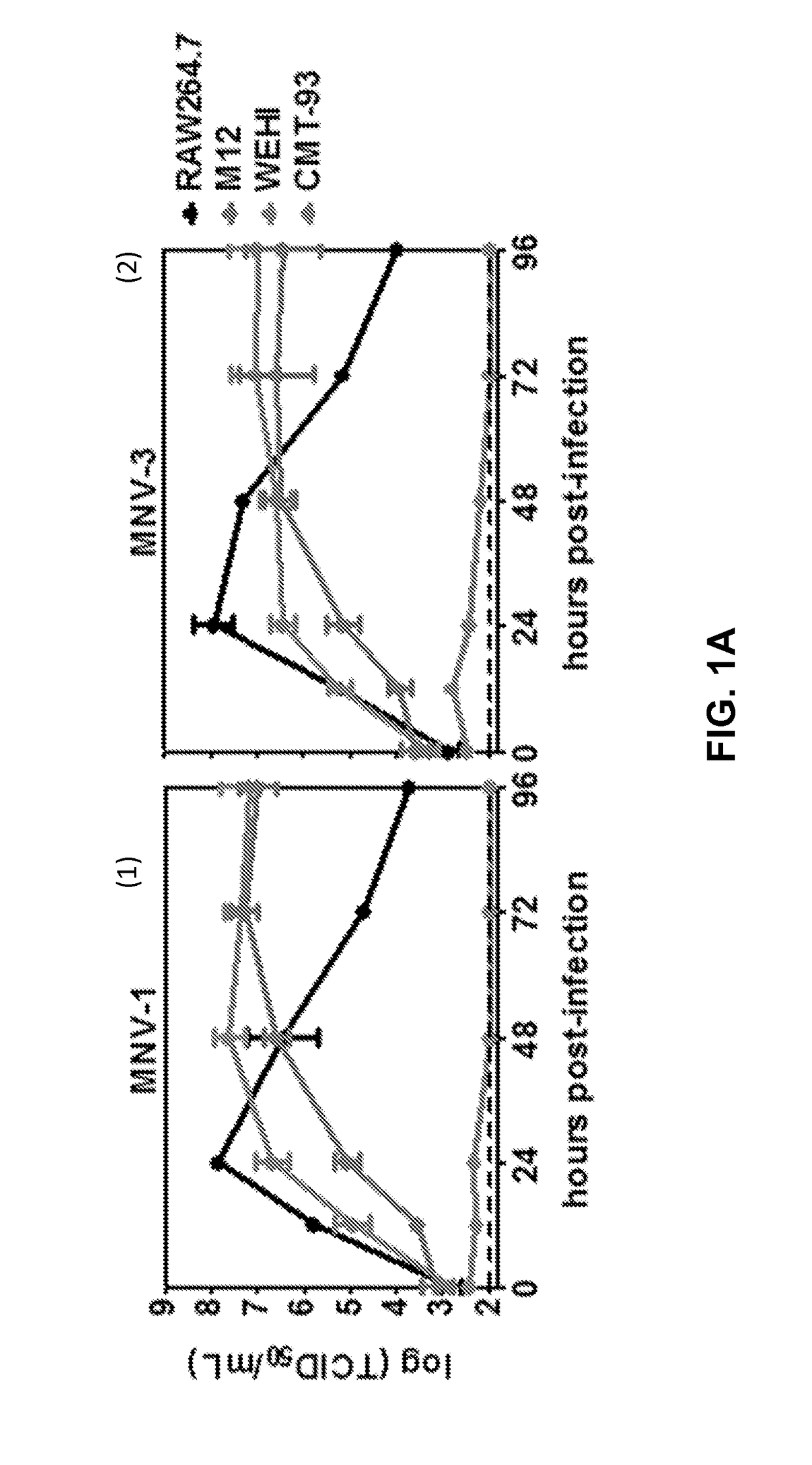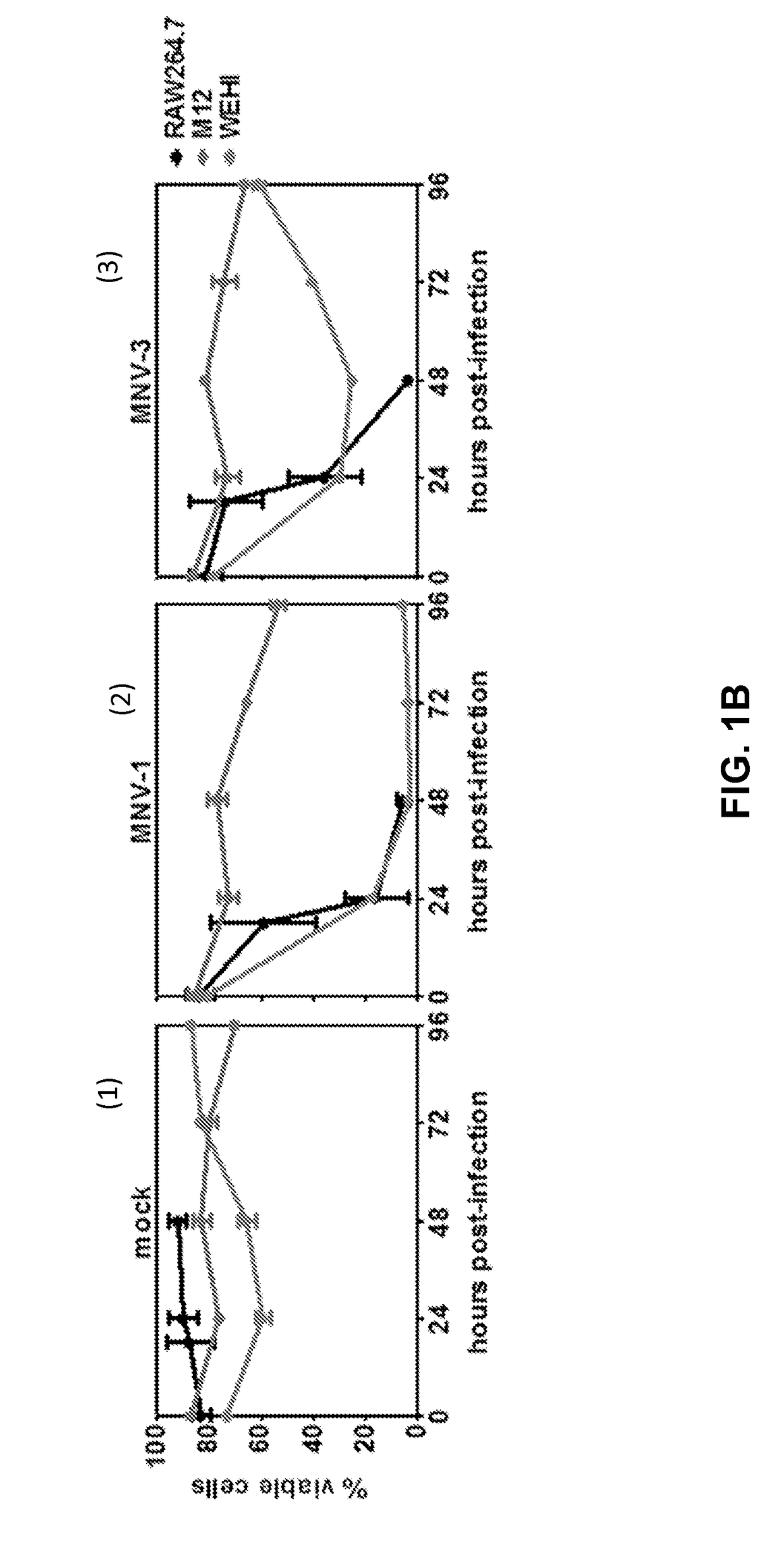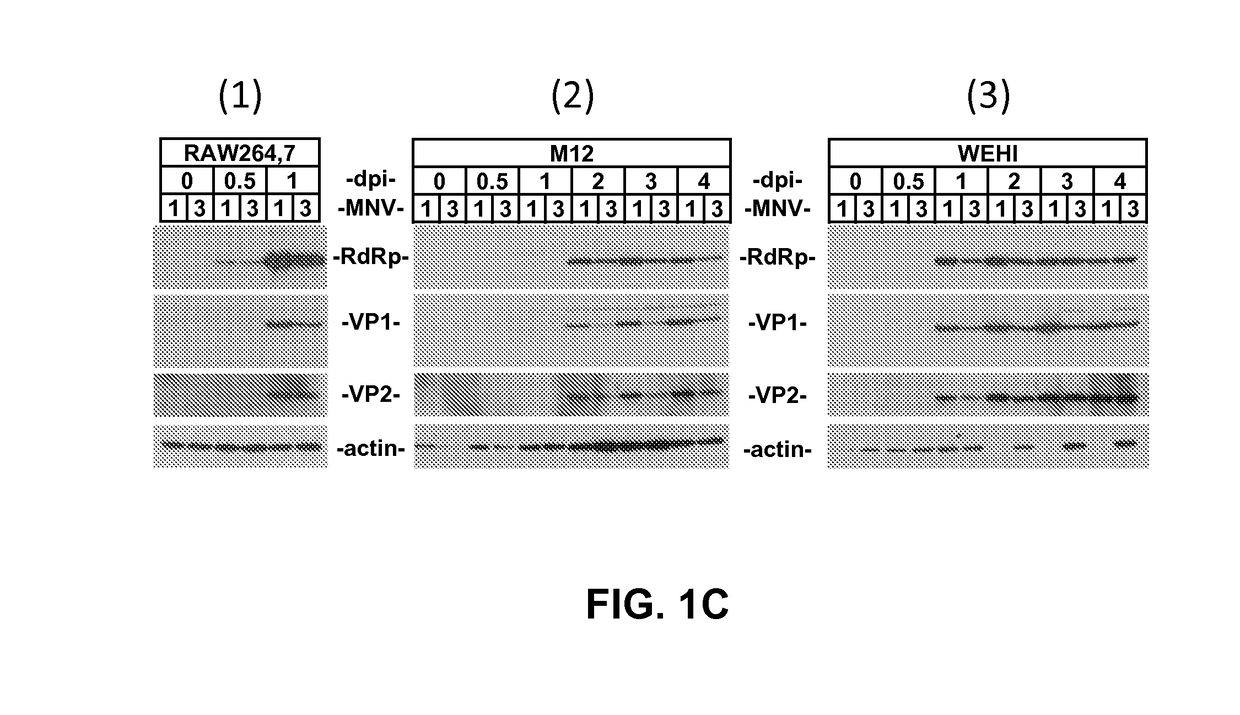Methods and compositions for caliciviridae
- Summary
- Abstract
- Description
- Claims
- Application Information
AI Technical Summary
Benefits of technology
Problems solved by technology
Method used
Image
Examples
example 1
Materials and Methods
[0069]Cell lines. The M12 (26), WEHI-231 (27), and BJAB (28) B-cell lines were cultured in RPMI with 10% fetal bovine serum; M12 and WEHI-231 media was supplemented with 50 μM β-mercaptoethanol. RAW264.7, CMT-93, 293T, and HT-29 cell lines were cultured in DMEM with 10% fetal bovine serum. Media for all experiments contained 100 U / mL penicillin and 100 μg / mL streptomycin. For co-culturing human IECs and B-cells, HT-29 cells were grown to confluency on hanging wells. Polarization was confirmed prior to infections using fluorescein-conjugated dextran 3000 Da (FITC-dextran) exclusion. Specifically, 4 μg / mL FITC-dextran was loaded into the apical chamber. At 45 min. post-incubation, basal supernatants were collected and analyzed for fluorescent signal using a Synergy BioTek plate reader. Basal supernatants with fluorescence maxima less than 10% of the signal detected in a control well with no HT-29 cells were considered to be polarized. BJAB-cells were then cultured...
example 2
Results for Murine Norovirus Infection of B-cells Studies
[0087]To test whether MNVs infect B-cells in culture, two murine B-cell lines called M12 and WEHI cells were infected with either MNV-1 or MNV-3 at MOI 5. The RAW 264.7 murine Mφ cell line known to be highly permissive to MNV infection was tested as a positive control (14). An IEC line CMT-93 was tested as a negative control since it has been shown that MNVs fail to infect IECs in vitro (9). As expected, RAW 264.7 cells produced ca. 108 TCID50 units per mL of each virus by 24 hpi whereas CMT-93 cells produced no detectable progeny virus through 96 h (FIG. 1A, 1 and 2). MNV-1 and MNV-3 both replicated efficiently in M12 and WEHI B-cells, although peak titers were not reached until 48-72 hpi (FIGS. 1A, 1 and 2). The M12 cells produced ca. 4-fold and 25-fold less peak MNV-1 and MNV-3 than RAW 264.7 cells, respectively; the WEHI cells produced ca. 2-fold and 8-fold less MNV-1 and MNV-3 than RAW 264.7 cells, respectively. Peak vira...
example 3
Murine Noroviruses Establish Persistent B-cell Infection
[0092]Because MNV infection of M12 cells was associated with minimal CPE, it was examined whether the cultures were capable of clearing infection or instead became persistently infected. To address this, M12 cells were infected with MNV-1 or MNV-3 at MOI 5 for 48 h. Cells were then washed extensively to remove extracellular virus and re-plated at a low cell density. This was repeated every 48 h for a total of 25 passages. In all passages tested, a comparable amount of supernatant-associated virus ranging from 2×106-3×107 TCID50 units per mL for MNV-1 and 3×106-2×107 TCID50 units per mL for MNV-3 was detected, demonstrating persistent M12 infection by both virus strains (FIG. 3A). MNV-3-infected WEHI cells were tested in parallel in one experiment and similar persistent infection through ten passages was observed. Viral infectivity during persistent M12 infection was also measured. Persistently MNV-1-infected cultures contained ...
PUM
| Property | Measurement | Unit |
|---|---|---|
| Attenuation coefficient | aaaaa | aaaaa |
Abstract
Description
Claims
Application Information
 Login to View More
Login to View More - R&D
- Intellectual Property
- Life Sciences
- Materials
- Tech Scout
- Unparalleled Data Quality
- Higher Quality Content
- 60% Fewer Hallucinations
Browse by: Latest US Patents, China's latest patents, Technical Efficacy Thesaurus, Application Domain, Technology Topic, Popular Technical Reports.
© 2025 PatSnap. All rights reserved.Legal|Privacy policy|Modern Slavery Act Transparency Statement|Sitemap|About US| Contact US: help@patsnap.com



